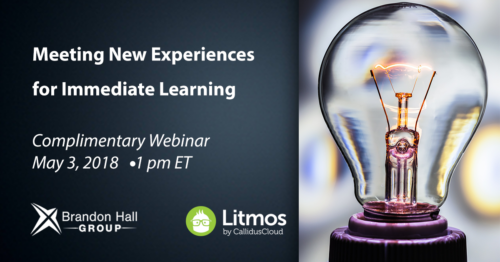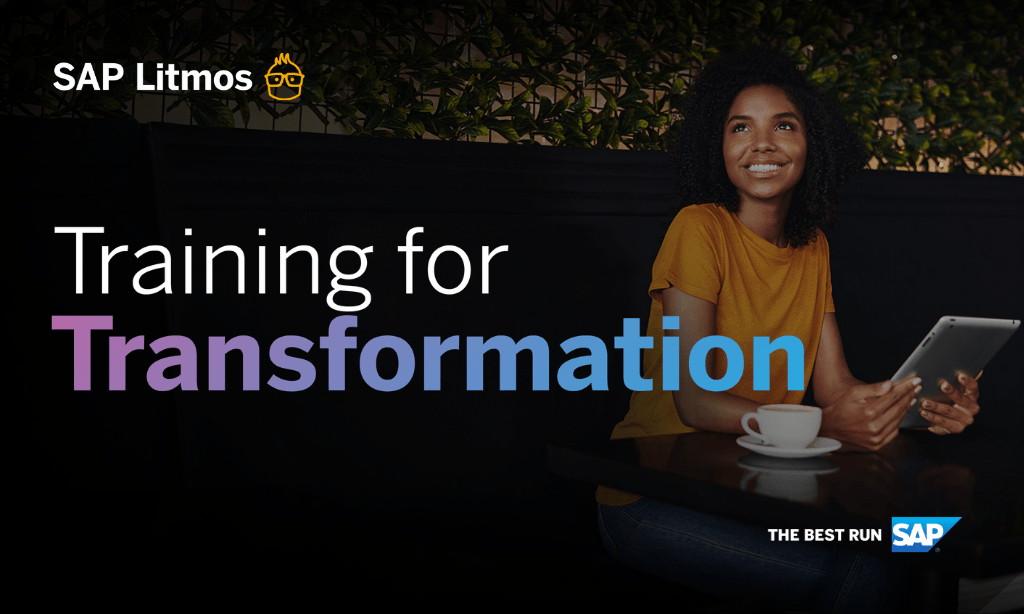Learning in the Now
One of learning’s biggest challenges has been becoming an integral part of people’s everyday work life. A legacy of traditional classes and courses has made it so employees tend to think of learning as something separate – something that takes them away from their jobs, rather than helping them do their jobs better. It has created an environment where learning is removed from performance, and employees often take a negative view of their learning and development interactions.
Today’s technology environment exacerbates this challenge. People are used to having access to the information they need when and where they need it. Whether looking for information or consuming media, nothing is more than a click (or tap) away. It’s not just Millennials, either. We all live in an age when we are mere seconds from the answer to almost anything.
Corporate learning has been slow to keep up. We’ve continued to push out classes and courses while people learned what they needed on their own, via the internet or through peers. It’s like we’ve been trying to sell 8-track tapes to people with Spotify accounts. It’s a model that simply isn’t sustainable.

~~~
It’s not just the needs of the learners, either. Organizations cannot afford to spend massive amounts of time and energy building and perfecting learning courses, only to find that by the time the course deploys, the business needs have changed. A rapidly changing business environment requires both agile learning and agile learners.
Agility requires the ability to adapt on the fly.
No more reliance on pure ADDIE or Waterfall models that require a lot of time to produce programs. Smaller pilot programs to targeted groups help make learning creation more iterative, getting better with each roll out. If a program is not achieving desired results, an agile framework allows that to be addressed more quickly and without having to start over from scratch. If our modern learners are busy, strapped for time, and able to switch gears quickly, learning needs to be able to meet those needs.
Unfortunately, most organizations are not ready to make these changes, despite their awareness of how critical they are. For instance, 73% of companies say it is either important or critical to increase the amount of experiential learning they deliver, yet only 23% say they are ready to take action. Only 16% of companies say they are ready to take action to increase the amount of mobile learning delivery they do.
Our research also shows that organizations need their people to connect with learning much more frequently than they currently do. If we want people to grow, develop, and be high performers, we can’t do it by having them take a class every week or click through a course once a day. The ultimate goal is to reach a point where learning is continuous, ubiquitous, and unseen. The technology is available to make this happen. The volume and variety of learning experiences that can be delivered is staggering. Artificial intelligence and machine learning concepts are making it easier to deliver learning in a more targeted, personalized fashion. The capability to connect people to anyone and anything they need to become better, faster and stronger currently exists. The goal is in sight. Organizations just need to make sense of the technology landscape and figure out how to get started. Some things to think about from a technology standpoint:
- Identify what is missing from your current technology stack. What are you unable to deliver well, or even at all?
- Consult with business leaders. What do they think their people need to be successful?
- Define your requirements. What type of features and functions are learners looking for?
- Evaluate providers. Can they walk you through how their technology meets the specific requirements of your learners and your business?
The webinar will be a great opportunity to learn more about this shift, what it means, and how your organization can begin to rethink it’s learning technology strategy, so please register today.




